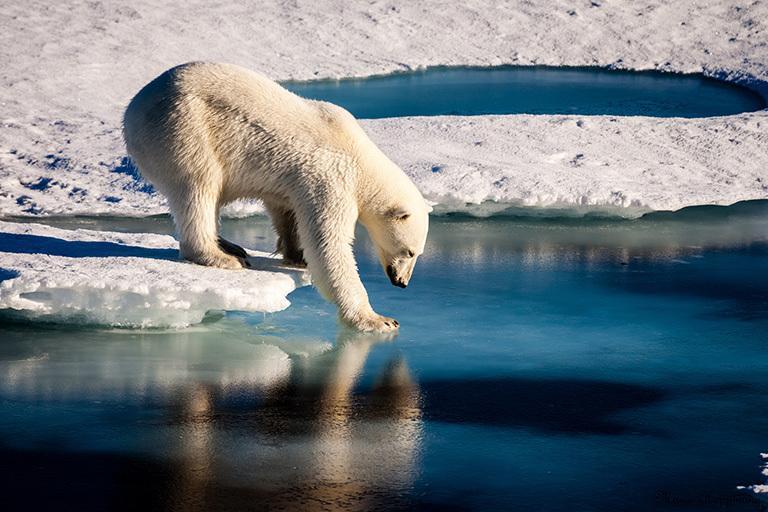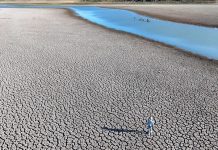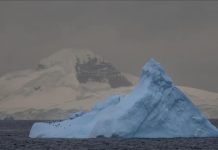Writing by Alperen Aktas
Africa-Press – Eritrea. The Arctic, a polar region located in the far north of the Earth, has been the most affected by global climate change in recent years, resulting in rapid melting of ice and warming, as well as affecting wildlife, particularly the polar bear.
Polar bears, the world’s largest land predators, have been designated as “vulnerable” on the International Union for Conservation of Nature (IUCN) Red List due to declining populations, and are most likely to lose habitat in the Arctic territories of Canada, Denmark (Greenland), Norway, Russia, and the US (Alaska) if the melting trend continues, putting marine mammals’ survival at risk.
The IUCN used a GPS collar tracking device to monitor and study the loss of polar bear habitat and sea ice.
Recent research indicates that unless carbon emissions are reduced, polar bear populations in many areas may become extinct by the end of this century.
During the third National Arctic Scientific Research Expedition under the auspices of Türkiye’s Polar Research Institute, scientists observed polar wildlife habitats and conducted reports throughout the expedition.
Live observations conducted in polar regions are of significant importance as they serve as preliminary preparations for comprehensive research in future expeditions.
During scientific research expeditions, physical parameters supporting the ecosystem are observed, along with research on climate projections and ecosystem adaptation to change in the region.
The aim is to contribute to international literature by monitoring these parameters in the coming years. The researchers attribute the shrinking habitat of polar bears in the Arctic, which is a sanctuary for other species, to global climate change and the subsequent melting of sea ice.
Evolution of polar bears in Northern Hemisphere
The Arctic serves as the sole region where polar creatures can sustain their lives. Researchers note that polar bears are exclusive to the Arctic, having evolved there and spent their lives primarily on sea ice, except during breeding seasons.
Although it may appear that polar bears, a young evolutionary species descended from brown bears, could easily find food in the Southern Hemisphere, scientists argue that this could lead to ecological collapse.
Climate change affects polar bear hunting behaviors
Ringed seals, another species inhabiting the Arctic Sea, are known to be significant prey for polar bears.
Ringed seals and their pups use sea ice as both a hunting ground and a hiding place. The melting of sea ice destroys these hiding spots, leaving ringed seals vulnerable to predation.
Significant decrease in Arctic Sea ice
Professor Burcu Ozsoy, coordinator of the third National Arctic Scientific Research Expedition, spoke to Anadolu about the diversity of life in the polar region, emphasizing significant differences between the Arctic (North Pole) and Antarctica (South Pole).
Ozsoy highlighted that the Arctic and Antarctic poles differ not only in terms of oceans and continents but also in the significant variation of species living in these two regions. Penguins dominate in the south, whereas polar bears are found in the north.
She noted that Antarctic wildlife does not fear humans, unlike in the Arctic, where animals display more skittish behavior and tend to flee.
She stressed the importance of sea ice for polar bears, as it allows them to travel over the ocean and hunt fish. With the melting of sea ice, the survival of polar bears is threatened.
“Especially during our journey from the 71st to the 81st north latitude, a struggle for survival takes place here in the sea and the ocean, where creatures reside and polar bears sustain their lives on sea ice,” she said.
“Through our research and observations, we notice that there is a significant decrease in Arctic sea ice, and we see that polar bears, which rely on sea ice for hunting strategies, are profoundly affected by the diminishing sea ice.
“These are the consequences of climate change. It’s not just polar bears that are impacted, but also the ecosystems in the sea and on land,” she said.
Importance of sea ice for polar bears
Ozgun Oktar, who led the scientific research expedition team, described sea ice as a crucial geographic formation for polar bears, with about a third of it lost in the Arctic.
During the expedition, he mentioned encountering polar bears on sea ice, where they travel long distances to find food.
Oktar told Anadolu: “We witnessed polar bears walking on the ice towards our ship, with their sole intention being to feed. The polar bears we encountered were a mother and a cub. Mothers educate their cubs during a span of about 2-3 years, teaching them how to hunt and survive in different regions.
“However, we know that by the 2030s, particularly during the summer season, there will be no sea ice left in the Arctic. This means that much of the information the mother bear imparts to her cub now may be of little use to them later.”
He highlighted that the melting sea ice is a strong indicator of a significant transformation, stating, “While a part of this change happens within the Earth’s natural cycles, we can also observe humanity’s impact here from the ice’s records spanning hundreds of thousands of years.”
For More News And Analysis About Eritrea Follow Africa-Press







